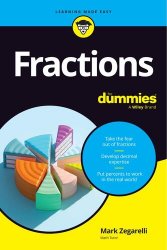 Название: Google JAX Cookbook: Perform Machine Learning and numerical computing with combined capabilities of TensorFlow and NumPy
Название: Google JAX Cookbook: Perform Machine Learning and numerical computing with combined capabilities of TensorFlow and NumPyАвтор: Zephyr Quent
Издательство: GitforGits
Год: 2024
Страниц: 333
Язык: английский
Формат: pdf, azw3, epub, mobi
Размер: 10.1 MB
This is the practical, solution-oriented book for every data scientists, Machine Learning engineers, and AI engineers to utilize the most of Google JAX for efficient and advanced Machine Learning. It covers essential tasks, troubleshooting scenarios, and optimization techniques to address common challenges encountered while working with JAX across Machine Learning and numerical computing projects.
JAX is a Python library for accelerator-oriented array computation and program transformation, designed for high-performance numerical computing and large-scale Machine Learning. JAX provides a familiar NumPy-style API for ease of adoption by researchers and engineers.
The book starts with the move from NumPy to JAX. It introduces the best ways to speed up computations, handle data types, generate random numbers, and perform in-place operations. It then shows you how to use profiling techniques to monitor computation time and device memory, helping you to optimize training and performance. The debugging section provides clear and effective strategies for resolving common runtime issues, including shape mismatches, NaNs, and control flow errors. The book goes on to show you how to master Pytrees for data manipulation, integrate external functions through the Foreign Function Interface (FFI), and utilize advanced serialization and type promotion techniques for stable computations.
If you want to optimize training processes, this book has you covered. It includes recipes for efficient data loading, building custom neural networks, implementing mixed precision, and tracking experiments with Penzai. You'll learn how to visualize model performance and monitor metrics to assess training progress effectively. The recipes in this book tackle real-world scenarios and give users the power to fix issues and fine-tune models quickly.
Key Learnings:
Get your calculations done faster by moving from NumPy to JAX's optimized framework.
Make your training pipelines more efficient by profiling how long things take and how much memory they use.
Use debugging techniques to fix runtime issues like shape mismatches and numerical instability.
Get to grips with Pytrees for managing complex, nested data structures across various machine learning tasks.
Use JAX's Foreign Function Interface (FFI) to bring in external functions and give your computational capabilities a boost.
Take advantage of mixed-precision training to speed up neural network computations without sacrificing model accuracy.
Keep your experiments on track with Penzai. This lets you reproduce results and monitor key metrics.
Use advanced visualization techniques, like confusion matrices and learning curves, to make model evaluation more effective.
Create your own neural networks and optimizers directly in JAX so you have full control of the architecture.
Use serialization techniques to save, load, and transfer models and training checkpoints efficiently.
Contents:
Скачать Google JAX Cookbook: Perform Machine Learning and numerical computing with combined capabilities of TensorFlow and NumPy
[related-news] [/related-news]
Комментарии 0
Комментариев пока нет. Стань первым!
















